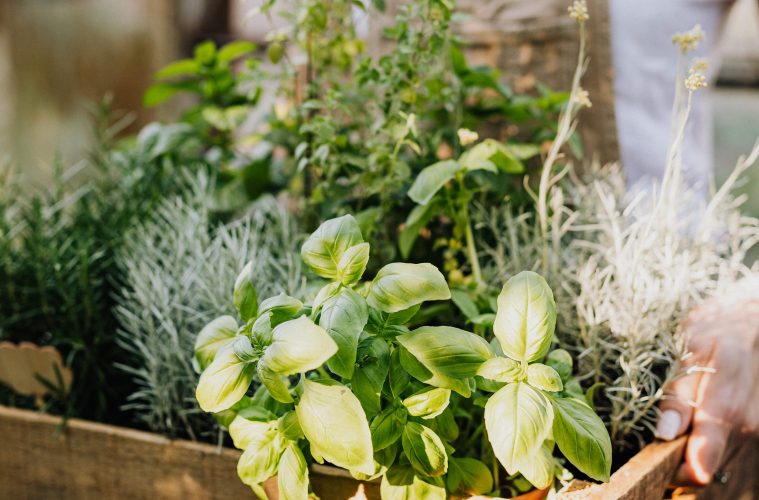Basil is a kitchen staple, but it can be just as useful in the garden too. Try these 5 different types of basil for something a little different this year.
Sweet Basil
Topping the list for use in the kitchen, Sweet Basil is full of flavour and adds a spiciness to sandwiches, salads and wraps. Made into the iconic pesto, it is perfect for pastas, sauces and potatoes. Smear over fresh fish, wrap in pastry and bake for a smart dish for your next party. They grow to around 50cm high and produce white flowers that can also be used once you are done with the leaves for adding a mild basil flavour to cheese and vegetables, meats and salads.
Dark Opal Basil
Rich purple leaves are the outstanding feature on Ocimum basilicum ‘Dark Opal’. It’s a great contrast plant in the garden and the leaves have an intense spicy flavour for use in the kitchen for salads and savoury dishes. It also produces pink flowers which can be used in sugars to decorate cakes and biscuits. It is a bit of a slow grower, but the foliage is well worth the effort.
Pink or White Perennial Basil
The perennial basils, a woodier shrub, are hardier than the annual basils. Although the leaves are edible, they impart a bitter flavour. Their true showpiece is the flowers that bloom from early spring and into late autumn with pretty spikes of white or pink flowers that are pollinator magnets. The plants grow about 1.5m high and 1m wide. If they are well watered, the leaves are milder, often added to sauces, soups and stews. Even if they are not used in the kitchen, perennials basils are well-worth having in the garden or in pots on a patio.
Siam Queen
Go a bit more exotic with this Thai basil that has a sweet flavour with a hint of liquorice, used extensively in Asian cooking for stir fries, curries, noodles and seafood dishes. The leaves are more of a pointed shape with square purple stems with deep purple flowers, It’s pretty-looking plant for the herb garden or planted as a companion to tomatoes and peppers.
Purple Ruffles
Used as an accent plant in the garden or in pots, this basil has large shiny purple leaves with ruffled edges and pink flowers, making it a sort-after herb. There is also Green Ruffles that has large green fringed leaves for something a bit different. In the kitchen, it has a taste of liquorice and cinnamon and is often added to salads.
Growing Tips
- Plant in rich soil with plenty of added compost. The soil should be well-draining.
- Choose a sunny position. In warmer areas, they prefer morning sun and in cooler climates full day sun.
- Purple-leaved basils have a lack of chlorophyll in their leaves and will need more sun to create the energy needed for healthy growth.
- Basil needs more water than other herbs like thyme, rosemary and sage. In pots and in the ground, don’t let the soil dry out before watering again.
- Feed once a month with a fertiliser high in nitrogen in the garden and feed container plants twice a month with a liquid fertiliser.
- Pinch off the growing tips to create bushier plants and pinch off any flowers before the leaves get bitter.
- Harvest the leaves regularly to keep them trimmed.
- Basil plants need to be pruned to prevent them from becoming leggy. Pruning also makes the leaves tastier and prevents the plants from going to seed too early.
- Basils are not frost hardy. It’s best to plant and use in the summer months or keep indoors over winter.
ALSO SEE: How to plant and grow cabbage

